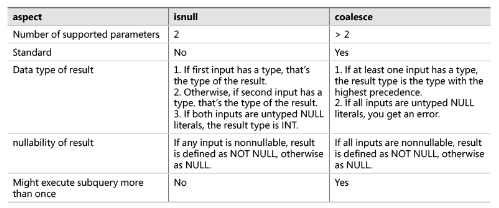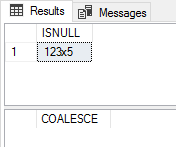Worth mentioning is that the type handling between the two can also make a difference (see this related answer item (2)).
Say a query tries to use a shortcut for writing null comparison:
select * from SomeTable
where IsNull(SomeNullableBitField, -1) != IsNull(SomeOtherNullableBitField, -1);
which is different than
select * from SomeTable
where coalesce(SomeNullableBitField, -1) != coalesce(SomeOtherNullableBitField, -1);
Because in the first case, the IsNull() forces the type to be a bit (so -1 is converted to true) whereas the second case will promote both to an int.
with input as
(
select convert(bit, 1) as BitOn,
convert(bit, 0) as BitOff,
convert(bit, null) as BitNull
)
select BitOn,
BitOff,
BitNull,
IsNull(BitOn, -1) IsNullBitOn, -- true
IsNull(BitOff, -1) IsNullBitOff, -- false
IsNull(BitNull, -1) IsNullBitNull, -- true, converts the -1 to bit
coalesce(BitOn, -1) CoalesceBitOn, -- 1
coalesce(BitOff, -1) CoalesceBitOff, -- 0
coalesce(BitNull, -1) CoalesceBitNull -- -1
from input;
There is a similar comment/link (@Martin Smith) on the question itself.







ISNULLwill also coerce the result to the datatype of the first expression as illustrated here – Thorny